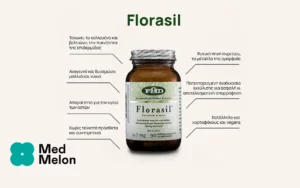Scientific Names of Spearmint Leaf: Mentha spicata L. var. crispa [Fam. Lamiaceae]
Forms:
Spearmint leaf tea; Alcohol extracts of spearmint; spearmint oil
Traditional Usage:
– Antibacterial
– Antinflammatory (for mucous membranes)
– Antiseptic (externally)
– Antispasmodic
– Breathing Disorders
– Bronchitis
– Carminative
– Cellular Regeneration
– Cough
– Cold
– Colic
– Diarrhea
– Digestive Cramps
– Digestive Disorders
– Dyspepsia
– Fatigue
– Fever
– Flatulence
– Gastrointestinal Disorders
– Headaches
– Irritable Bowel Syndrome (IBS)
– Menstrual Cramps
– Mental Fatigue
– Nasal Congestion
– Nausea
– Stomachaches
Overview:
Spearmint, Mentha spicata L. var. crispa [Fam. Lamiaceae], is a popular culinary and medicinal herb used around the world that can be used like peppermint after a meal for its ability to reduce indigestion and gas. Spearmint tea was also traditionally used in Europe as a medicine to treat colds, fevers, headaches, nausea, stomachaches, cramps, diarrhea, and colic. In European folk tradition, spearmint leaf tea was also used against fatigue and as an antispasmodic for treating menstrual cramps. Spearmint oil has strong antimicrobial properties against bacterial infections and can be used both internally and externally. The antibacterial effects of the essential oil of spearmint and of three major constituents of the essential oil were tested and were found to be very potent against the proliferation of several pathogenic bacteria including Helicobacter pylori, Salmonella enteritidis, Escherichia coli O157:H7, methicillin-resistant Staphylococcus aureus (MRSA) and methicillin-sensitive Staphylococccus aureus (MSSA). The essential oils and the various constituents inhibited the proliferation of each strain in liquid culture in a dose-dependent manner and were almost the same against antibiotic-resistant and antibiotic-sensitive strains of Helicobacter pylori and S. aureus. Certain monoterpenes from spearmint oil, including perillyl alcohol and limonene, have also been shown to have tremendous activity for combating abnormal growths. Perillyl alcohol is active in inducing apoptosis (cell death) in abnormal cells without affecting normal cells and can revert abnormal cells back to a normal state. In animal studies, these monoterpenes have been shown to regress pancreatic, mammary, liver, colon, skin, lung, neuroblastoma, prostate, upper stomach and colon abnormal growths and are under evaluation in Phase I clinical trials with humans. These monoterpenes boost glutathione levels and other antioxidants within the body. Preventive treatment of mice with spearmint extract (10, 15 and 20 mg/kg) 1 hr before treatment with a powerful oxidizer significantly reduced cell damage.
Active Ingredients:
Spearmint leaves contain: 0.8-2.5% essential oil containing approximately 50% of the monoterpene carvone, as well as dihydrocarveol acetate, perillyl alcohol, limonene and other monoterpenes. There are also many tannins, flavonoids, sesquiterpenes, triterpenes and other bitter substances in the leaves.
Suggested Amount:
Spearmint can be taken as a tea with the recommended dosage of a warm cup of tea taken three to five times a day between or after meals, or as required. The infusion of coarsely cut or powdered leaves is made using 1.5g (ca. 1 tablespoon) of herb material to 150ml of boiling water. The boiling water is poured over the herb material and extracted for 10 minutes. Alternatively, 5-15g of tincture can be taken daily, or other preparations taken correspondingly. For washes, a 5% infusion is recommended.
Drug Interactions:
None known
Contraindications:
None known
Side Effects:
As with other essential oils, pure spearmint essential oil can cause contact dermatitis and is also toxic when ingested. Spearmint oil can also cause allergic reactions in susceptible persons. Normal dosages of spearmint do not cause heartburn (esophageal acid reflux), but very high dosages can irritate the lower esophagus and thereby aggravate heartburn.
References:
Bulat R, Fachnie E, Chauhan U, Chen Y, Tougas G. 1999. Lack of effect of spearmint on lower oesophageal sphincter function acid reflux in healthy volunteers. Aliment Pharmacol Ther 1999 Jun; 13(6): 805-12
Crowell PL. 1999. Prevention and therapy of cancer by dietary monoterpenes. J Nutr. 1999 Mar; 129(3): 775S-778S. Review.
Imai H, Osawa K, Yasuda H, Hamashima H, Arai T, Sasatsu M. 2001. Inhibition by the essential oils of peppermint and spearmint of the growth of pathogenic bacteria. Microbios. 2001; 106 Suppl 1: 31-9.
Saleem M, Alam A, Sultana S. 2000. Attenuation of benzoyl peroxide-mediated cutaneous oxidative stress and hyperproliferative response by the prophylactic treatment of mice with spearmint (Mentha spicata). Food Chem Toxicol 2000 Oct; 38(10): 939-48
Wichtl M (ed). 1994. Menthae crispae folium – Spearmint leaf. In Herbal Drugs and Phyto-pharmaceuticals. (English translation by Norman Grainger Bisset). CRC Press, Stuttgart, pp. 333-335.




